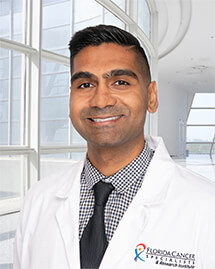Author(s): Yelena Y. Janjigian, M.D.1; Salah-Eddin Al-Batran, M.D.2; Zev A. Wainberg, M.D.3; Kei Muro, M.D., Ph.D.4; Daniela Molena, M.D.5; Eric Van Cutsem, M.D., Ph.D.6; Woo Jin Hyung, M.D., Ph.D.7; Lucjan Wyrwicz, M.D., Ph.D.8; Do-Youn Oh, M.D., Ph.D.9; Takeshi Omori, M.D., Ph.D.10; Markus Moehler, M.D., Ph.D.11; Marcelo Garrido, M.D.12; Sulene C.S. Oliveira, M.D.13; Moishe Liberman, M.D., Ph.D.14; Victor Castro Oliden, M.D.15; Elizabeth C. Smyth, M.D.16; Alexander Stein, M.D.17; Mehmet Bilici, M.D.18; Maria Lorena Alvarenga, M.D.19; Vadim Kozlov, M.D.20; Fernando Rivera, M.D., Ph.D.21; Akihito Kawazoe, M.D., Ph.D.22; Olivier Serrano, M.Sc.23; Eric Heilbron, M.D.24; Alejandra Negro, Ph.D.24; John F. Kurland, Ph.D.24; Josep Tabernero, M.D., Ph.D.25
BACKGROUND
Perioperative FLOT (fluorouracil, leucovorin, oxaliplatin, and docetaxel) is a standard therapy for resectable gastric and gastroesophageal junction adenocarcinomas, but recurrence rates remain high. Immunotherapy plus chemotherapy may improve outcomes.
METHODS
In a phase 3, multinational, double-blind, randomized trial, we assigned participants with resectable gastric or gastroesophageal junction adenocarcinoma, in a 1:1 ratio, to receive durvalumab at a dose of 1500 mg or placebo every 4 weeks plus FLOT for 4 cycles (2 cycles each of neoadjuvant and adjuvant therapy), followed by durvalumab or placebo every 4 weeks for 10 cycles. The primary end point was event-free survival; secondary end points included overall survival and pathological complete response. Research Summary Perioperative Durvalumab in Gastric Cancer
RESULTS
A total of 474 participants were randomly assigned to the durvalumab group, and 474 to the placebo group (median follow-up, 31.5 months; interquartile range, 26.7 to 36.6). Two-year event-free survival (Kaplan–Meier estimate) was 67.4% among the participants in the durvalumab group and 58.5% among those in the placebo group (hazard ratio for event or death, 0.71; 95% confidence interval [CI], 0.58 to 0.86; P<0.001). Two-year overall survival was 75.7% in the durvalumab group and 70.4% in the placebo group (piecewise hazard ratio for death during months 0 to 12, 0.99 [95% CI, 0.70 to 1.39], and during the period from month 12 onward, 0.67 [95% CI, 0.50 to 0.90]; P=0.03 by a stratified log-rank test [exceeding the significance threshold of P<0.0001]). The percentage of participants with a pathological complete response was 19.2% in the durvalumab group and 7.2% in the placebo group (relative risk, 2.69 [95% CI, 1.86 to 3.90]). Adverse events with a maximum grade of 3 or 4 were reported in 340 participants (71.6%) in the durvalumab group and in 334 (71.2%) in the placebo group. The percentage of participants with delayed surgery was 10.1% and 10.8%, respectively, and the percentage with delayed initiation of adjuvant treatment was 2.3% and 4.6%.
CONCLUSIONS
Perioperative durvalumab plus FLOT led to significantly better event-free survival outcomes than FLOT alone among participants with resectable gastric or gastroesophageal junction adenocarcinoma. (Funded by AstraZeneca; MATTERHORN ClinicalTrials.gov number, NCT04592913.)
Author Affiliations
1Gastrointestinal Oncology Service, Memorial Sloan Kettering Cancer Center and Weill Cornell Medicine, New York; 2Krankenhaus Nordwest, University Cancer Center (UCT) Frankfurt, and Frankfurt Institute of Clinical Cancer Research (IKF), Frankfurt, Germany; 3Department of Gastrointestinal Medical Oncology, David Geffen School of Medicine at University of California, Los Angeles, Los Angeles; 4Department of Clinical Oncology, Aichi Cancer Center Hospital, Nagoya, Japan; 5Division of Thoracic Surgery, Memorial Sloan Kettering Cancer Center and Weill Cornell Medicine, New York; 6Department of Gastroenterology/Digestive Oncology, University Hospitals Leuven and KU Leuven, Leuven, Belgium; 7Department of Surgery, Yonsei University College of Medicine, Seoul, South Korea; 8Department of Oncology and Radiotherapy, Maria Sklodowska-Curie National Research Institute of Oncology, Warsaw, Poland; 9Division of Medical Oncology, Department of Internal Medicine, Seoul National University Hospital, and the Cancer Research Institute, Seoul National University College of Medicine, Seoul, South Korea; 10Department of Gastroenterological Surgery, Osaka International Cancer Institute, Osaka, Japan; 11Research Center for Immunotherapy (FZI), Johannes Gutenberg-University Clinic, Mainz, Germany; 12Hemato-Oncology Department, SAGA Clinical Trial Center and Universidad Mayor, Santiago, Chile; 13Clinical Oncology, Clinical Research Center, Northern Riograndense League Against Cancer, Natal, Brazil; 14Division of Thoracic Surgery, Department of Surgery, Centre Hospitalier de l’Université de Montréal, Centre de Recherche du CHUM, Montréal; 15National Institute of Neoplastic Diseases (INEN), Lima, Peru; 16Oxford NIHR Biomedical Research Centre, Churchill Hospital, Oxford, United Kingdom; 17Hematology-Oncology Practice Eppendorf (HOPE), University Cancer Center Hamburg (UCCH), University Medical Center Hamburg-Eppendorf, Hamburg, Germany; 18Department of Internal Medicine, Division of Medical Oncology, Atatürk University Faculty of Medicine, Erzurum, Turkey; 19Department of Clinical Oncology, Favaloro Foundation University Hospital, Buenos Aires; 20State Budgetary Health Care Institution, Novosibirsk Regional Clinical Oncology Dispensary, Novosibirsk, Russia; 21Medical Oncology Department, Hospital Universitario Marqués de Valdecilla, IDIVAL, Santander, Spain; 22Department of Gastroenterology and Gastrointestinal Oncology, National Cancer Center Hospital East, Kashiwa, Japan; 23Cytel, AstraZeneca, Paris; 24Oncology R&D, Late-Stage Development, AstraZeneca, Gaithersburg, MD; 25Medical Oncology Department, Vall d’Hebron Hospital Campus and Institute of Oncology (VHIO), IOB-Quiron, UVic-UCC, Barcelona
